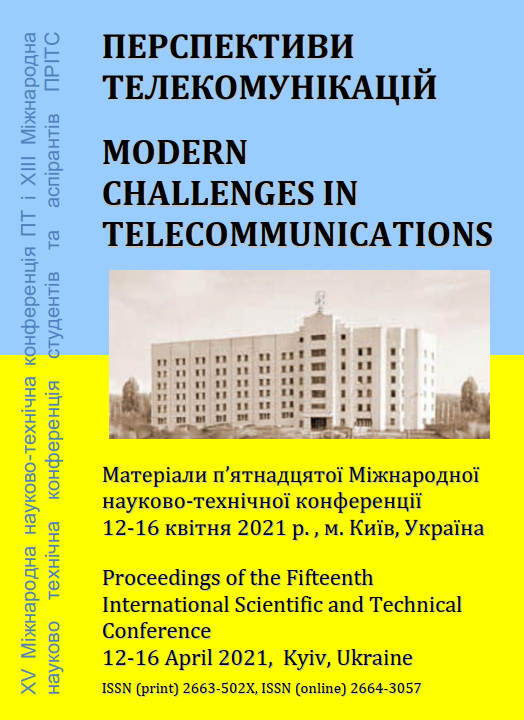ВИКОРИСТАННЯ ТЕХНОЛОГІЇ SDN ПРИ ПОБУДОВІ КАМПУСНОЇ МЕРЕЖІ LI-FI
Ключові слова:
ТЕХНОЛОГІЯ SDN, МЕРЕЖА LI-FIАнотація
Подальший розвиток систем безпроводового доступу найближчим часом може зіткнутися з низкою проблем. Це обмеженість частотного спектра, низька енергоефективність радіосистем, обмеження на використання радіозв'язку (наприклад, в літаках, лікарнях та ін.), недостатня безпека (радіохвилі можуть проникати крізь стіни і надавати шкідливий вплив на біологічні та технічні об'єкти). Одним з можливих напрямків вирішення цих проблем є застосування Li-Fi технології. В такої системі замість звичних радіочастот для передачі даних використовується світло. Причому можуть бути використані світлові хвилі як області інфрачервоного (ІЧ) діапазону випромінювання, так і хвилі спектру видимого світла. Сьогодні вважається більш перспективним побудова телекомунікаційних систем з використанням спектра частот видимого світла (VLC).Посилання
Mohammad Dehghani Soltani, Ardimas Purwita, Harald Haas. Impact of Device Orientation on Error Performance of LiFi Systems. // January 2019, DOI: 10.1109/ACCESS.2019.2907463.
Iman Tavakkolnia, Lethy K. Jagadamma, Rui Bian, Pavlos P. Manousiadis, Stefan Videv1, Graham A. Turnbull , Ifor D. W. Samuel, Harald Haas. Organic photovoltaics for simultaneous energy harvesting and high-speed MIMO optical wireless communications // 2021, https://strathprints.strath.ac.uk/75042/
Oleksandr Romanov, Tho Dong and Mikola Nesterenko. The Possibilities for Deployment Eco-Friendly Indoor Wireless Networks Based on LiFi Technology/ 8th International Conference on Applied Innovations in IT, (ICAIIT), March 2020. http://dx.doi.org/10.25673/32747,
##submission.downloads##
Опубліковано
Як цитувати
Номер
Розділ
Ліцензія

Ця робота ліцензується відповідно до Creative Commons Attribution 4.0 International License.
Authors who submit to this conference agree to the following terms:a) Authors retain copyright over their work, while allowing the conference to place this unpublished work under a Creative Commons Attribution License, which allows others to freely access, use, and share the work, with an acknowledgement of the work's authorship and its initial presentation at this conference.
b) Authors are able to waive the terms of the CC license and enter into separate, additional contractual arrangements for the non-exclusive distribution and subsequent publication of this work (e.g., publish a revised version in a journal, post it to an institutional repository or publish it in a book), with an acknowledgement of its initial presentation at this conference.
c) In addition, authors are encouraged to post and share their work online (e.g., in institutional repositories or on their website) at any point before and after the conference.

